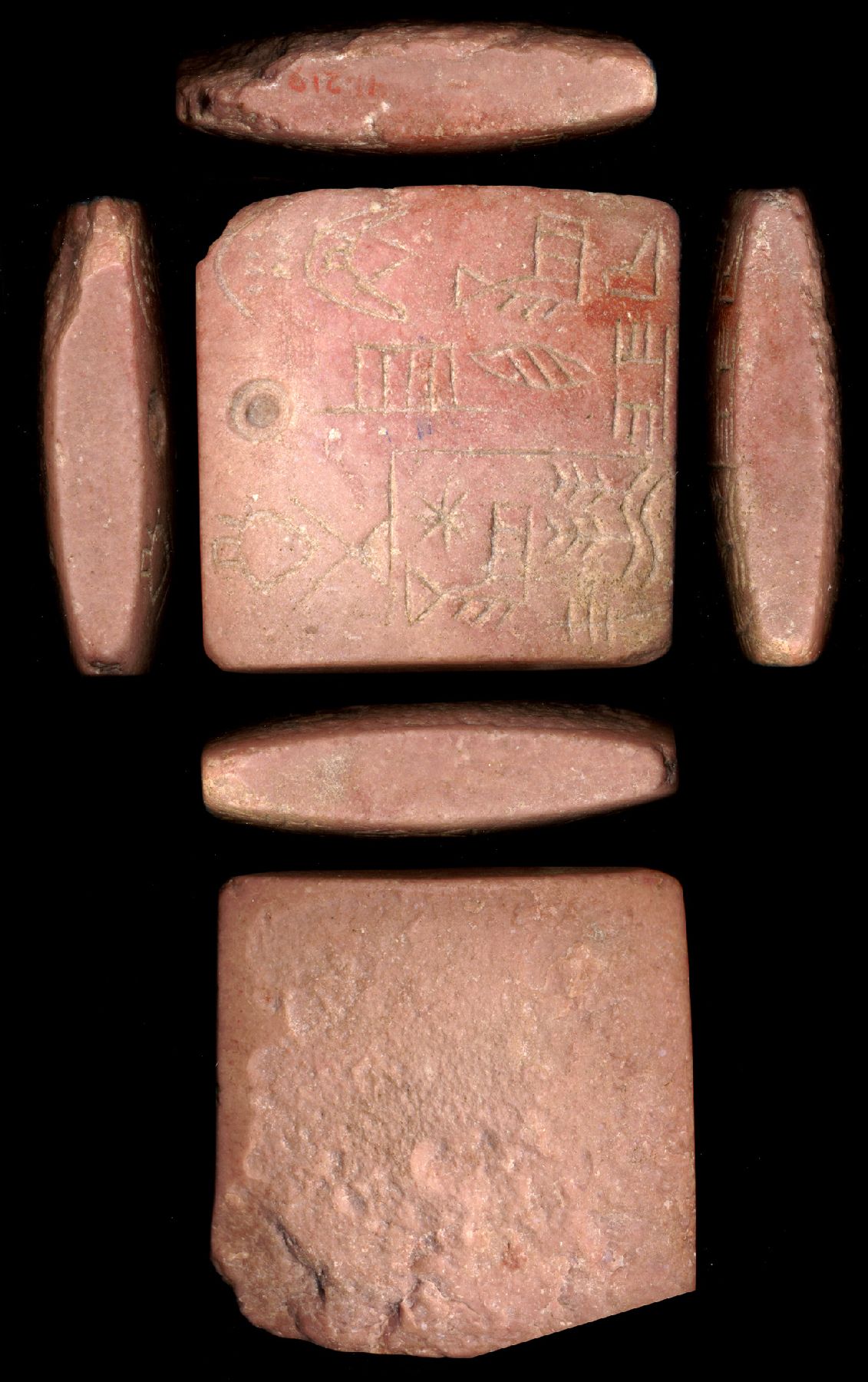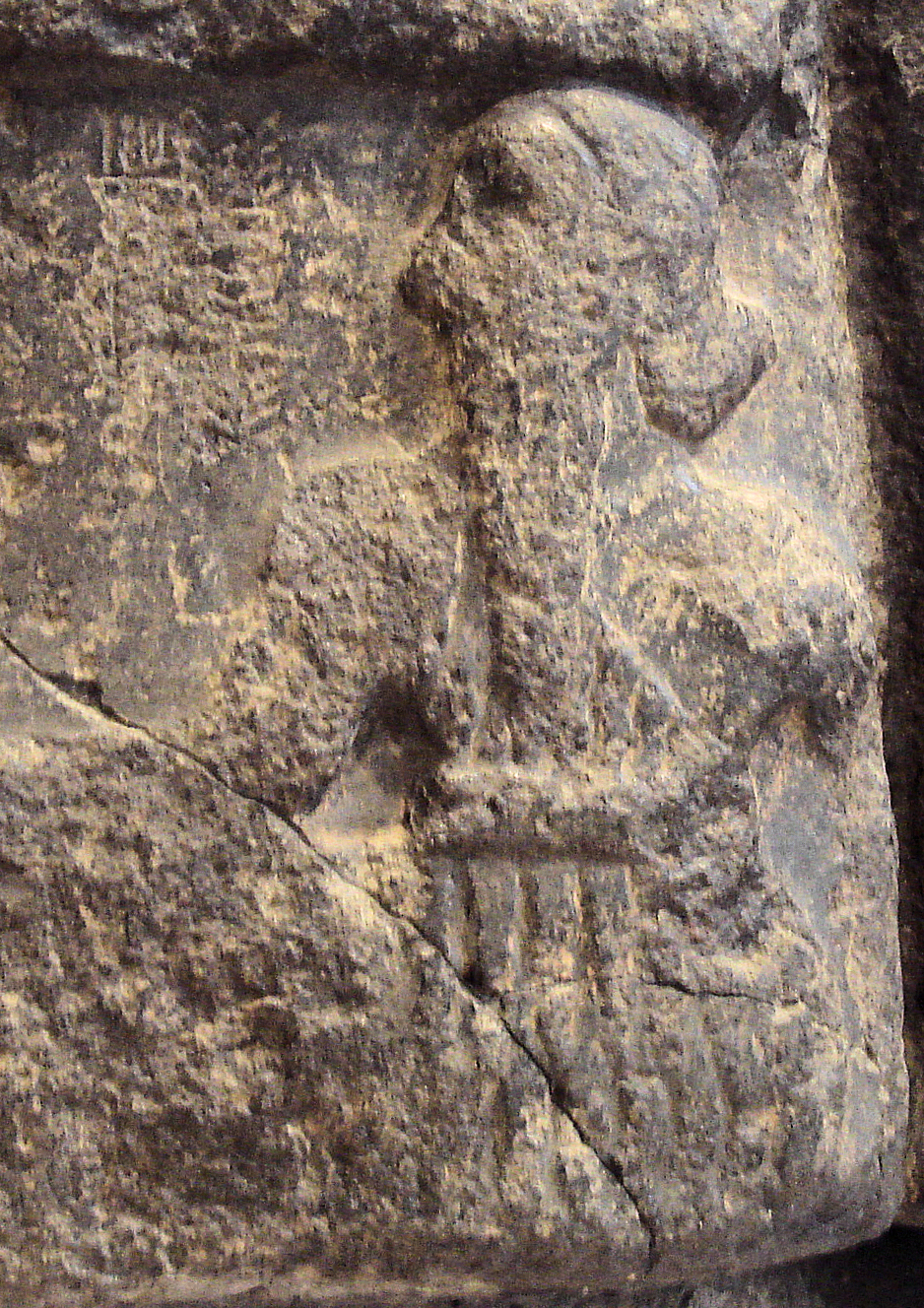|
Ili-ishmani
Ili-ishmani ( '' i3-li2-isz-ma-ni''; ) was a ruler of Elam around 2150 BC. His name is purely Akkadian, and he was in charge of Elam at the time of Naram-Sin and/or Shar-Kali-Sharri, and probably their vassal. His title of "Military Governor" ('' Shakkanakku'' in Akkadian, GIR.NITA in Sumerian) suggests that he was a dependent of the Akkadian kings, rather than an independent ruler. Ili-ishmani rose from the position of scribe, already one of the top three positions in the land, to the position of Governor. His predecessor was probably Epirmupi. After him, and the weakening of Akkad, rule in Elam probably reverted to local rulers of the Awan Dynasty. Axe fragment The fragment of an axe is known, which was dedicated by Ili-ishmani. It reads: Seal inscription A seal found in Lagash also has the inscription "Ili-ishmani Governor ('' Ensi'') of Susa" ( ''Ili-ishmani ensi Shushanki''). File:Ili-ishmani ensi Shushanki.jpg, Seal found in Lagash Lagash (; cuneiform: LAGAŠK ... [...More Info...] [...Related Items...] OR: [Wikipedia] [Google] [Baidu] |
Epirmupi
Epirmupi ( ''E-pir-mu-pil'', previously read E-nam-mu-de; died 2154 BC) was a ruler of Elam around 2199–2154 BC. His name is purely Akkadian, and he was in charge of Elam at the time of Rimush and Manishtushu, or early in the reign of Naram-Sin and probably their dependent and vassal. His title of "Military Governor" ('' Shakkanakku'' in Akkadian, GIR.NITA in Sumerian) suggests that he was a dependent of the Akkadian kings, rather than an independent ruler. He also held the title of Ensi of Susa". His successor was probably Ili-ishmani. After Ili-ishmani, and the weakening of the Akkadian Empire, rule in Elam reverted to local rulers of the Awan Dynasty. Seal inscriptions Various inscriptions in the name of Epirmupi are known, especially "Epirmupi, the Shakkanakku of the land of Elam” and "Epirmupi, Ensi of Susa". A seal is known with the inscription "Epirmupi, the strong, Liburbeli, cup-bearer, your servant", incorporating the image of two heroic combats: a naked he ... [...More Info...] [...Related Items...] OR: [Wikipedia] [Google] [Baidu] |
Shakkanakku
Shakkanakku ( Sumerian: , GIR.NITA or ''šagina'', , ''Shakkanakku''), was an Akkadian-language title designating a military governor. Mari was ruled by a dynasty of hereditary Shakkanakkus which was originally set by the Akkadian Empire and gained independence following Akkad's collapse. It is considered that the Shakkanakkus gained some form of independence and came to be considered as "Kings" from the time of Apil-Kin. A critical analysis of the Shakkanakku List of Mari has been published. The title is also known around the same time in Elam, where several "Shakkanakku (Military Governor) of the country of Elam" with typically Akkadian names ruled for the Akkadian kings.Translation into French in The title also existed in Qatna in the 14th century BC, and Dilmun under the Kassites. Shakkanakkus under the Akkadians Shakkanakkus, or ''Shagina'' military governors are known from the time of the Akkadian Empire. For example, Shar-kali-sharri had a military governor in ... [...More Info...] [...Related Items...] OR: [Wikipedia] [Google] [Baidu] |
King Of Elam
The kings of Elam were the rulers of Elam, an ancient civilization and kingdom in south-western Iran. The earliest known Elamite dynasty was the Awan dynasty, which came to power in the Early Dynastic period. Elam was conquered by the Akkadian Empire around 2325 BC and was then ruled by a sequence of Akkadian-appointed governors before independence was restored a little over a century later. After the reign of the powerful Elamite king Puzur-Inshushinak, Elam was conquered again by the Sumerian Third Dynasty of Ur. Native Elamite rule was after a few decades restored under the Shimashki dynasty during the reign of Ur III king Ibbi-Sin. In 2004 BC the Shimashki king Kindattu sacked Ur, whereafter Elam became fully independent. The Sukkulmah dynasty, perhaps a related lineage, was established in another part of Elam shortly thereafter, and after a period of overlap gradually overtook the Shimashki dynasty. The Sukkalmah dynasty was followed by the Kidinuid and Igihalkid dynast ... [...More Info...] [...Related Items...] OR: [Wikipedia] [Google] [Baidu] |
Naram-Sin Of Akkad
Naram-Sin, also transcribed Narām-Sîn or Naram-Suen (: '' DNa-ra-am D Sîn'', meaning "Beloved of the Moon God Sîn", the "𒀭" a determinative marking the name of a god; died 2218 BC), was a ruler of the Akkadian Empire, who reigned –2218 BC ( middle chronology), and was the third successor and grandson of King Sargon of Akkad. Under Naram-Sin the empire reached its maximum extent. He was the first Mesopotamian king known to have claimed divinity for himself, taking the title "God of Akkad", and the first to claim the title " King of the Four Quarters". His military strength was strong as he crushed revolts and expanded the empire to places like Turkey and Iran. He became the patron city god of Akkade as Enlil was in Nippur. His enduring fame resulted in later rulers, Naram-Sin of Eshnunna and Naram-Sin of Assyria as well as Naram-Sin of Uruk, assuming the name. Biography Naram-Sin was a son of Manishtushu. He was thus a nephew of King Rimush and grandson of Sarg ... [...More Info...] [...Related Items...] OR: [Wikipedia] [Google] [Baidu] |
Susa
Susa ( ) was an ancient city in the lower Zagros Mountains about east of the Tigris, between the Karkheh River, Karkheh and Dez River, Dez Rivers in Iran. One of the most important cities of the Ancient Near East, Susa served as the capital of Elam and the winter capital of the Achaemenid Empire, and remained a strategic centre during the Parthian Empire, Parthian and Sasanian Empire, Sasanian periods. The site currently consists of three archaeological mounds, covering an area of around . The city of Shush, Iran, Shush is located on the site of ancient Susa. Name The name Susa is of Elamiate origin and has appeared in many languages: *Middle *Middle and Neo- *Neo-Elamite language, Elamite and Achaemenid Empire, Achaemenid *Achaemenid Empire, Achaemenid * * * * or *New * Literary references Susa was one of the most important cities of the Ancient Near East. In Historiography, historic literature, Susa appears in the very earliest Sumerian records: for exa ... [...More Info...] [...Related Items...] OR: [Wikipedia] [Google] [Baidu] |
Elam
Elam () was an ancient civilization centered in the far west and southwest of Iran, stretching from the lowlands of what is now Khuzestan and Ilam Province as well as a small part of modern-day southern Iraq. The modern name ''Elam'' stems from the Sumerian language, Sumerian transliteration ''elam(a)'', along with the later Akkadian language, Akkadian ''elamtu'', and the Elamite ''haltamti.'' Elamite states were among the leading political forces of the Ancient Near East. In classical literature, Elam was also known as Susiana ( ; ''Sousiānḗ''), a name derived from its capital Susa. Elam was part of the early Cities of the Ancient Near East, urbanization of the Near East during the Chalcolithic period (Copper Age). The emergence of written records from around 3000 BC also parallels Sumerian history, where slightly earlier records have been found. In the Old Elamite period (Bronze Age, Middle Bronze Age), Elam consisted of kingdoms on the Iranian plateau, centered in Ansha ... [...More Info...] [...Related Items...] OR: [Wikipedia] [Google] [Baidu] |
Akkadian Language
Akkadian ( ; )John Huehnergard & Christopher Woods, "Akkadian and Eblaite", ''The Cambridge Encyclopedia of the World's Ancient Languages''. Ed. Roger D. Woodard (2004, Cambridge) Pages 218–280 was an East Semitic language that is attested in ancient Mesopotamia ( Akkad, Assyria, Isin, Larsa, Babylonia and perhaps Dilmun) from the mid- third millennium BC until its gradual replacement in common use by Old Aramaic among Assyrians and Babylonians from the 8th century BC. Akkadian, which is the earliest documented Semitic language, is named after the city of Akkad, a major centre of Mesopotamian civilization during the Akkadian Empire (–2154 BC). It was written using the cuneiform script, originally used for Sumerian, but also used to write multiple languages in the region including Eblaite, Hurrian, Elamite, Old Persian and Hittite. The influence of Sumerian on Akkadian went beyond just the cuneiform script; owing to their close proximity, a lengthy span of con ... [...More Info...] [...Related Items...] OR: [Wikipedia] [Google] [Baidu] |
Shar-Kali-Sharri
Shar-Kali-Sharri (, ''Dingir, DShar-ka-li-Sharri''; died 2193 BC) reigned c. 2218–2193 BC (middle chronology) as the ruler of Akkadian Empire, Akkad. In the early days of cuneiform scholarship the name was transcribed as "Shar-Gani-sharri". In the 1870s, Assyriologists thought Shar-Kali-Sharri was identical with the Sargon of Akkad, first ruler of the Akkadian Empire, but this identification was recognized as mistaken in the 1910s. His name was sometimes written with the leading Dingir sign demarking deification and sometimes without it. Clearly at some point he was deified and two of his designations marked his divine status, "heroic god of Akkade", and "god of the land of Warium". He was the son and successor of Naram-Sin of Akkad, Naram-Sin who deified himself during his lifetime.Thureau-Dangin, F., "Encore la Dynastie d'Agadé", Revue d'Assyriologie 9, pp. 81–83, 1912 Biography Shar-Kali-Sharri succeeded his father Naram-Sin of Akkad, Naram-Sin around 2218 BC. According ... [...More Info...] [...Related Items...] OR: [Wikipedia] [Google] [Baidu] |
Sumerian Language
Sumerian ) was the language of ancient Sumer. It is one of the List of languages by first written account, oldest attested languages, dating back to at least 2900 BC. It is a local language isolate that was spoken in ancient Mesopotamia, in the area that is modern-day Iraq, Iraq. Akkadian language, Akkadian, a Semitic languages, Semitic language, gradually replaced Sumerian as the primary spoken language in the area (the exact date is debated), but Sumerian continued to be used as a sacred, ceremonial, literary, and scientific language in Akkadian-speaking Mesopotamian states, such as Assyria and Babylonia, until the 1st century AD. Thereafter, it seems to have fallen into obscurity until the 19th century, when Assyriologists began Decipherment, deciphering the cuneiform inscriptions and excavated tablets that had been left by its speakers. In spite of its extinction, Sumerian exerted a significant influence on the languages of the area. The Cuneiform, cuneiform script, original ... [...More Info...] [...Related Items...] OR: [Wikipedia] [Google] [Baidu] |
Akkadian Empire
The Akkadian Empire () was the first known empire, succeeding the long-lived city-states of Sumer. Centered on the city of Akkad (city), Akkad ( or ) and its surrounding region, the empire united Akkadian language, Akkadian and Sumerian language, Sumerian speakers under one rule and exercised significant influence across Mesopotamia, the Levant, and Anatolia, sending military expeditions as far south as Dilmun and Magan (civilization), Magan (modern United Arab Emirates, Saudi Arabia, Bahrain, Qatar and Oman) in the Arabian Peninsula.Mish, Frederick C., Editor in Chief. "Akkad" ''iarchive:webstersninthne000merr, Webster's Ninth New Collegiate Dictionary''. ninth ed. Springfield, MA: Merriam-Webster 1985. ). The Akkadian Empire reached its political peak between the 24th and 22nd centuries BC, following the conquests by its founder Sargon of Akkad. Under Sargon and his successors, the Akkadian language was briefly imposed on neighboring conquered states such as Elam and Guti ... [...More Info...] [...Related Items...] OR: [Wikipedia] [Google] [Baidu] |






